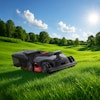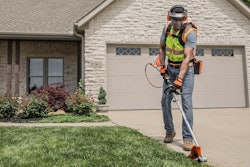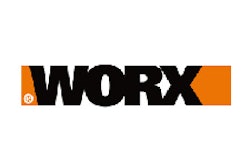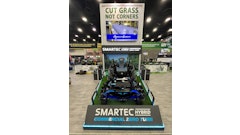Today’s consumers want tools and equipment that are reliable and easy to use. Now that many electric-powered products perform much better than in the past, manufacturers are seeing an increase in demand for electric-powered lawn and garden equipment.
“We see it as a billion-dollar market and growing,” says Joe Ferris, product manager for outdoor products at Positec USA (Worx brand). “There are two major things driving demand. One is the green movement. The primary factor, though, is ease of use.”
Historically, those two factors have somewhat conflicted with one another. “Our research indicates that there is an increasing demand for electric and alternative energy products as part of an overall movement toward sustainability,” says Steve Meriam, manager, national sales and product development for Stihl Inc. “However, this is tempered by the performance needs of customers, as well as, in the case of corded products, the inconvenience of dragging an electrical cord around when doing yard work.”
Now that battery technology has evolved considerably, more consumers are looking to electric as a viable option. “Many consumers are willing to give it a chance because the price points are often lower than traditional gas products,” says Pam Everett, a product manager at Husqvarna. “When the performance is proven to be up to par, it gives credibility to obtaining a quality product at a value.”
GROWING NICHE
When you’re talking about electric lawn equipment, you’re not just talking about handheld tools anymore. In fact, both Ariens Company and Hustler Turf Equipment have even introduced electric zero-turn mowers in the past year.
Still, the majority of sales growth has occurred in the staple handheld categories. “We’ve seen growth specifically in the battery-powered segment for hedgetrimmers and saws,” Everett says. “There has also been some shift from gas- to electric-powered trimmers and blowers over the past two or three years.”
According to Meriam, this demand is being spurred primarily by the consumer’s desire for reduced emissions and environmental impact. There are also some convenience factors associated with electric-powered equipment:
• No gasoline storage
• Less maintenance relating to fuel issues, such as stale or poor-quality fuel
• Generally easier to start
• Lightweight and quiet
Benefits such as these appeal to a wide variety of consumers, which is why Ferris says he’s seeing demand grow on a widespread basis. “One of our strongest markets now is Charlotte,” he adds.
Still, as Meriam points out, there are definite hot pockets for electric-powered equipment. “Certain parts of the country—California, Oregon, Washington and New England—tend to lead the country in environmental initiatives,” he says. “Urban and suburban areas also show a greater demand for electrics. Predominantly, the target customer is a female with a small urban or suburban property to maintain.”
But the target customer is in a period of flux, Everett points out. While it has traditionally been the homeowner with a small yard of a quarter acre or less, homeowners with larger lot sizes are also taking an interest in electric-powered lawn equipment. And according to Meriam, you could eventually see electric equipment appealing to professional users.
The key is the battery technology, which Ferris says is twice as good as it was 10 years ago. “Keep in mind that voltage times amp hours gives you watt-hour performance, which tells you the size of your fuel tank, so to speak,” he explains. “Worx products feature a working time of roughly half an hour. Then, the lithium battery needs another half hour or so to charge back up.”
IDEAL FOR DEALER SHOWROOMS
You can’t get much simpler or more convenient than that, which begs the question: Is electric equipment a good fit for the more knowledgeable, service-oriented dealer network?
Richard Johnson of Billings Lawn Equipment in Royal Oak, MI, would say that it is. “We’re getting a pretty good mix of both men and women who are purchasing our Worx-branded product,” he relates. “Age is around 40 and up. We’ve done really well with the line trimmer/edger. We brought in 15 pieces and sold out in three days.” Billings Lawn Equipment also sells Shindaiwa, Scag and Ferris product, among others.
Over in Ann Arbor, MI, Judy Luckhardt of Countryside Lawn & Garden Equipment has catered to a bit “greener” crowd. “It’s the younger generation that’s 20-35 years of age,” she says. “They don’t want to deal with gas and oil. And they don’t want to pollute. Green is cutting edge, and we want to be on the cutting edge side rather than playing catch-up—we want to be proactive.” Countryside Lawn & Garden also sells Echo, Scag, Gravely, Walker and Cub Cadet Commercial product, among others.
Aside from environmental impact, ergonomics is another big issue. “The clear weight advantage of an electric unit, coupled with improved performance, make electric-powered products a distinct target for a customer base that understands and values a product’s power-to-weight ratio as well as overall ease of use,” Everett points out.
Ferris says that while only 10% of electric-powered lawn and garden equipment is sold into the dealer channel, he sees no reason why dealers should relinquish this market opportunity to the box stores.
“There are two reasons why dealers are adding our product to their showrooms,” Ferris says. “They want to offer a green line, and they want to increase profitability without taking sales from products they’re already selling. And our products are quite unique and profitable. Since it’s not gas-powered, there’s basically no setup. You just need to display it.”
And even though electric equipment is not gas-powered, which provides everyday consumers with ample opportunity to ruin engines through improper gas/oil mixtures, there is still aftermarket business to be had by dealers. “There is always opportunities to sell trimmer line, cutting heads, bars and chains,” Everett reminds. “With battery products there is also the opportunity to sell backup battery packs as well as battery chargers.”
Ferris says a third of consumers who purchase a Worx-branded product also buy an extra battery. Even though they don’t have oil and filters to change, users do have to take care of the battery—which is where a knowledgeable dealer comes in.
“You want to educate consumers about what they need to do to condition the product for everyday use,” Ferris says. “There’s a break-in procedure consumers need to be aware of. The first few uses should be fully discharged, then fully recharged. Users won’t reach the full performance potential until three or four charge cycles. Then, battery storage procedures are very important.”
Beyond making sure that all these necessary conditioning and storage procedures are followed, product performance is going to depend on the manufacturer, as is the case with any technology. “There are cheap, gas-powered brands on the market, too,” Meriam reminds. “Manufacturers who want to compete in the electric arena will have to produce products that satisfy the consumers’ demand for quality, dependability, durability and performance—regardless of the power source.”
On the Market…
Find out more information about current products on the market by visiting the Equipment Guide and the online e-Inquiry system.
Husqvarna 316E Electric Saw
Visit yardngarden.com/einquiry and enter 37
Stihl’s BGE 61 Electric Handheld Blower
Visit yardngarden.com/einquiry and enter 38
Worx 18V Cordless Landscape Tools
visit yardngarden.com/einquiry and enter 40
The Mantis E-System
Visit yardngarden.com/einquiry and enter 41















![Gravely Pro Turn Mach One My23 Dsc03139 Edit 1200x800 5b2df79[1]](https://img.greenindustrypros.com/mindful/acbm/workspaces/default/uploads/2025/10/gravely-pro-turn-mach-one-my23-dsc03139-edit-1200x800-5b2df791.BucBnDoN22.jpg?ar=16%3A9&auto=format%2Ccompress&fit=crop&h=135&q=70&w=240)




